Fire Sprinkler System
The fire sprinkler system was invented more than 120 years ago. Since then, hundreds of millions of sprinkler heads have been installed worldwide. Over this period, the system has effectively protected thousands of buildings from fire hazards, helped countless business owners avoid financial crises, saved innumerable lives, and safeguarded the environment from fire-related pollution disasters.Globally, it is regarded as one of the most effective and proven methods for extinguishing fires.
The very first model of an automatic fire sprinkler system, along with its installation principles, was described in 1885 by John Wormald of the United Kingdom.
Today, sprinkler systems are manufactured in accordance with established standards for automatic sprinkler systems, including:
- BSI – British Standard BS 5306-2
- LPC – The Loss Prevention Council (UK)
- FM Global – American standard
- NFPA International – National Fire Protection Association (International)
- ISO 6182 – International Organization for Standardization standard for sprinklers
These standards ensure the system’s safety, reliability, and effectiveness in preventing and controlling fires.
Depending on the type and purpose of a building, sprinklers can be specially designed and adjusted to suppress fires in different ways, with the ultimate goal of saving lives.
A sprinkler system is an active fire suppression system that uses water — recognized as the most accessible and effective extinguishing medium — delivered through specially engineered sprinkler heads. It operates during the early stages of a fire, directly targeting the source with water spray to extinguish it.
Sprinkler heads automatically detect heat from a fire, release water exactly where it is needed, and activate the local fire alarm. In many cases, they can also transmit an alert directly to the fire department.
Most sprinkler heads consist of a main body connected to a water supply pipe and sealed by a valve. This valve is held in place by a glass bulb filled with a liquid that has a high coefficient of thermal expansion. Inside the liquid, there is a small amount of sealed gas.
When exposed to the heat from a fire, the liquid expands and compresses the gas, causing a rapid increase in pressure. As the temperature continues to rise, the pressure builds until the glass bulb bursts, breaking the valve seal. Water then flows out and strikes a deflector, which disperses it into fine droplets over a pre-determined coverage area above the fire.
This process ensures that water is sprayed evenly across the targeted zone, controlling or extinguishing the fire before it spreads.

Sprinkler Heads – Temperature Ratings, Types, and System Effectiveness
Sprinkler heads come in various temperature ratings, identifiable by the color of their glass bulbs. Each specialized head is designed according to operational requirements, fire risk classifications, and specific temperature thresholds.
Fire Risk Categories
In general, fire risk is categorized into three main types:
Light Hazard
Ordinary Hazard
Extra-High Hazard
The greater the risk, the higher the water discharge rate and application intensity required.
Sprinkler Head Types and Installation
Standard Sprinklers – Equipped with deflectors to direct part of the water upward toward the ceiling. Can be installed either upright or pendant.
Spray Sprinklers – Designed so all discharged water falls downward. Can be installed upright or pendant.
Sidewall Sprinklers – Installed on piping near walls to protect areas without overhead coverage.
Coverage capacity:
Light hazard – 17 m² per head
Ordinary hazard – 9 m² per head
Extended coverage sidewall sprinklers – up to 21 m² (must use quick-response glass bulbs)
Importance of Quick-Response Sprinklers
Most fire-related deaths occur not from direct flame exposure, but from inhalation of combustion products such as:
Carbon monoxide (CO)
Carbon dioxide (CO₂)
Hydrogen cyanide (HCN)
Hydrogen chloride (HCl)
Other toxic gases and particulates
Quick-response sprinklers activate faster, reducing exposure to lethal gases and high heat. They are crucial in places where occupants cannot evacuate on their own, such as hospitals and nursing homes, buying valuable escape time.
Water Supply and System Layout
Light and Ordinary Hazard Buildings (residential, offices, hotels, light manufacturing, retail) – Supplied from municipal mains.
Extra-High Hazard Facilities (industrial plants, warehouses) – Supplied via fire pumps from dedicated reservoirs or tanks.
Piping networks are hydraulically calculated to ensure even water pressure and flow to each head. Sprinkler coverage per head ranges from 9–21 m², depending on risk level.
Main Sprinkler System Types
Wet System – Pipes permanently filled with water. Must be installed where ambient temperature never falls below freezing.
Dry System – Pipes filled with pressurized air. When a head activates, the air is released, opening the valve to allow water flow.
Alternate Wet/Dry System – Wet in summer, dry in winter (when freezing risk exists).
Pre-Action System – Combines standard sprinklers with independent heat/smoke detectors. The control valve only opens after confirmed alarm signals, preventing accidental discharge.
Deluge System – For high-hazard areas with rapid fire spread risk. All connected sprinklers discharge simultaneously when triggered by separate detectors.
Proven Effectiveness
Australia & New Zealand – In the past century, sprinklers extinguished 99.5% of fires in protected buildings.
Europe – Over the last decade, 99% of fires in sprinkler-protected buildings were successfully controlled.
Germany – 86% of fires were extinguished with 5 or fewer heads.
UK – 50% of fires were extinguished with 2 or fewer heads.
Key reason for effectiveness: Sprinklers activate directly at the fire source before it grows or spreads. Only heads closest to the fire operate, minimizing water waste.
Minimum discharge: 60 L/min per head
Comparison: Fire hoses discharge ~500 L/min, meaning fires can cause severe damage before firefighters arrive.
Longevity and Global Use
40 million sprinklers installed annually
Service life: 25–50 years depending on manufacturer and maintenance
Fire can strike anywhere, anytime — but a well-designed sprinkler system protects not only lives and property today, but also safeguards future generations.







